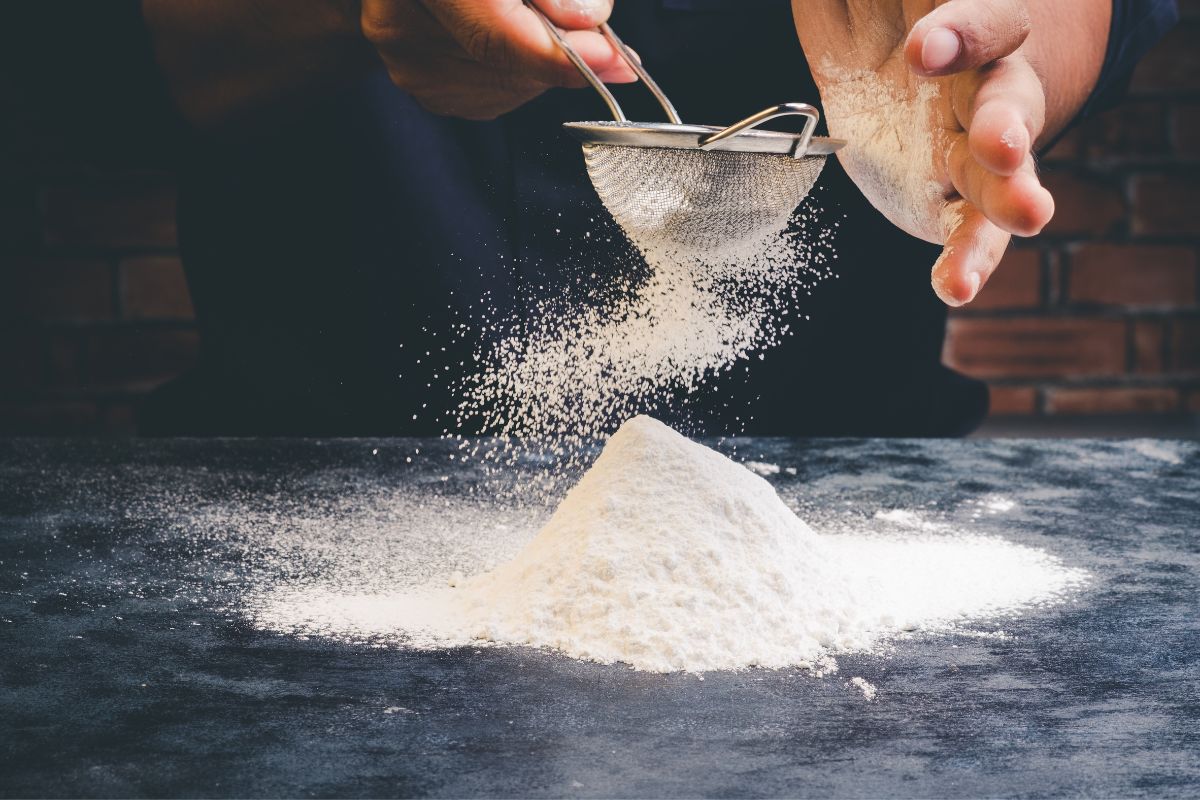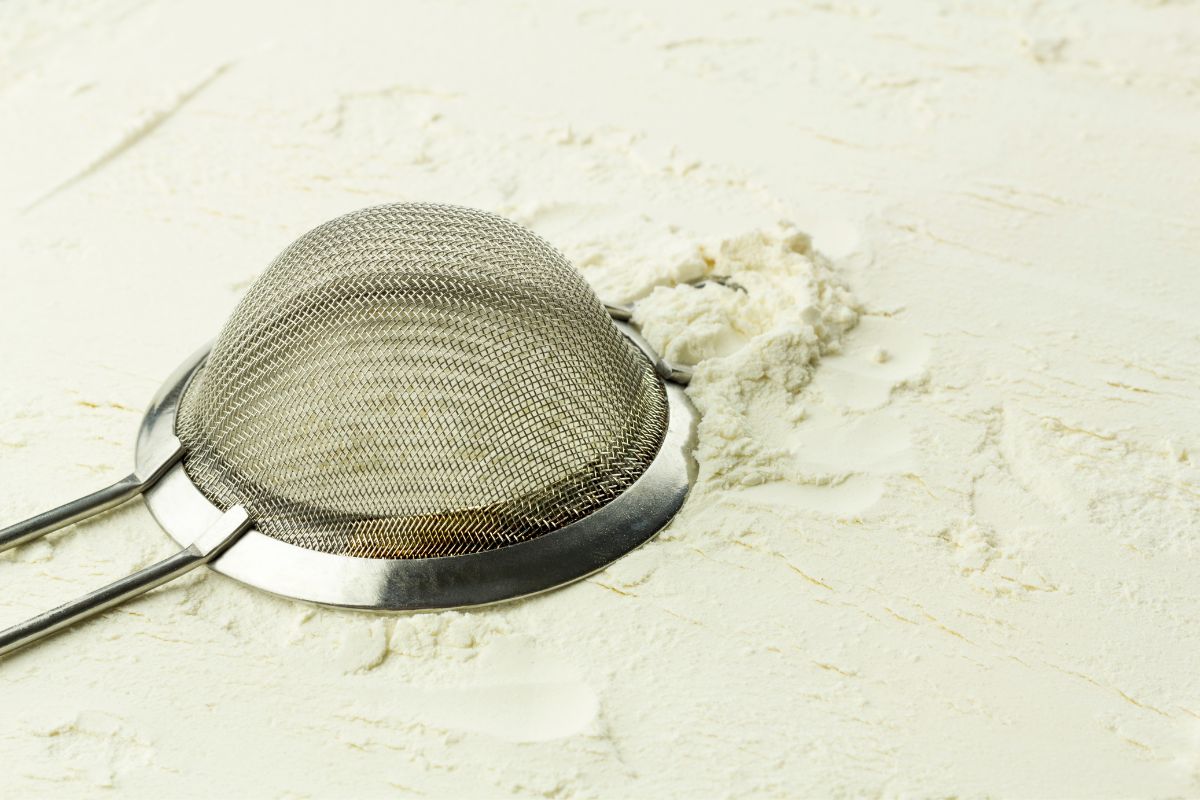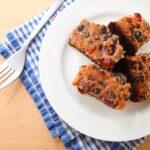Many recipes call for flour to be sifted but have you ever wondered why do you sift flour?
We look at what sifting does, how you sift flour, when you really need to and when it isn’t necessary. We’ll also look at the different types of flour sifter.

What Does Sifting Do?
Sifting accomplishes two things. It aerates the flour while also breaking up any lumps in the flour. This is mostly done through a sifter which is a stainless steel cup with a fine mesh base or a fine sieve.
By sifting the flour for a cake or batter it makes mixing the flour in a lot easier as the texture is finer. If you need to mix cocoa powder into flour such as when making a chocolate cake, sifting the two together means they will be well combined before adding wet ingredients.
Sifting also helps you to accurately and consistently measure your flour quantity. It won’t matter if the flour started out hard packed or not because you will be sifting it.
How Do You Sift Flour?
So, now that you know why you sift flour you will need to know how to sift it. There are two ways of sifting flour. First with a dedicated sifter or secondly with a fine sieve. Let’s take a look at both of them.
Types Of Flour Sifter
A dedicated flour sifter is a stainless steel cup that has a fine mesh in the base. Some have a mechanism on the handle that operates blades in the bottom of the cup which help to push the flour through the mesh. Other types are just the cup with the mesh base.

The second way to sift flour is to pass it through a fine mesh sieve which more people are likely to have in their kitchen as opposed to a special flour sifter.
You can tap the side of the sieve to encourage the flour to move through the mesh or use the back of a spoon for sifting ingredients like confectioner’s sugar.
Regardless of which type of flour sifter you use the end result will be the same. Fine flour that has been aerated and with no lumps.
When You Should Sift Flour
Long ago people sifted flour to separate out any bits of husk that were left in the flour. Thankfully today the flour is so well processed that this is unlikely to happen. But for some recipes sifting the flour is a good idea.
When you are making a cake such as a sponge or angel food cake you want the flour to be fine, light and lump free, so there is nothing weighing down the cake mixture.
The same is true if your flour is very tightly packed, sifting allows you to accurately measure it out as well as aerating it.
When mixing dry ingredients together, sifting makes sure that the blend of ingredients is well combined and equally distributed.
For rolling out dough on your counter or table, sifting a fine layer of flour over the surface makes sure that the dough doesn’t stick. Or that you don’t end up with lots of extra flour in your dough if you try to sprinkle it by hand, which won’t be as evenly distributed as sifting.
Measuring Sifted Flour
The process of measuring sifted flour can be a little confusing. Should you measure the flour and then sift it? Or sift the flour and then measure it?
First of all you need to carefully read your recipe. If it says ‘one cup of sifted flour’ then you need to measure the flour after it has been sifted. On the other hand if your recipe says ‘one cup of flour, sifted’ then you need to measure the flour and then sift it.
You can tell the difference between sifted and unsifted flour by their weight. A cup of unsifted flour weighs 5 ounces while a cup of sifted flour weighs 4 ounces.
Getting the right measurement of flour is very important to the success of the recipe. Too much or too little flour can be the difference between an average or a great cake or loaf of bread.
When Sifting Isn’t Necessary
There are times when sifting flour is not necessary. One of these is when you are making tempura batter. This is a light and airy batter that it is made with flour and seltzer water. Tempura batter is used for coating vegetables, meat and seafood which are then deep fried.
However, despite being a light batter you do not need to sift the flour in this recipe as you actually want some lumps in the batter which help to give the batter its lightness. Sounds counterintuitive but it works.
A lot of modern flours will come in packaging that says it is pre-sifted and as such will not need to be sifted for your recipes. However, you should judge each recipe individually and if the recipe calls for sifted flour then that’s what you should use.
Is Sifting Just For Flour?
No, sifting is not just for flour. You can sift any dry ingredients including confectioner’s sugar, baking powder, baking soda, or cocoa powder.
Any dry, powdered ingredients that need to be combined into a recipe or need to be of a fine texture and without lumps can be sifted if the recipe requires it.
When you are combining a lot of dry ingredients, sifting is a great way to make sure that the proportions of the different ingredients are equally distributed throughout the mixture.
Making sure there are no lumps and incorporating some extra aeration into the ingredients can improve or enhance the texture of the baked goods.
In Conclusion
Flour doesn’t always need to be sifted but when it does now you know how to go about it.
We hope you have enjoyed our guide on why you sift flour and that you have found it informative and helpful. Happy baking!
- How To Reheat A Cheesesteak - November 5, 2023
- What Are Three Must Have Kitchen Knives? - September 22, 2023
- How To Protect Edges Of Pie Crust - June 15, 2023








